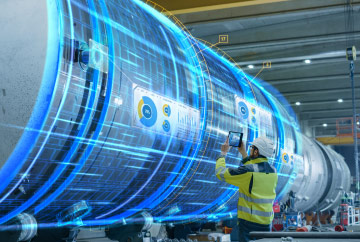What is the broad structure of Birlasoft operations and where does the energy industry fit into it?
Birlasoft acquired KPIT's IT business three years ago. The company focuses on five key verticals -- Manufacturing; Life Sciences; Energy & Utilities; Communication, Media & Technology; and finally BFSI. These verticals are supported by horizontal service lines – Enterprise Solutions, Digital Transformation, Infrastructure and Cloud and Customer Relationship Management (CRM) etc. These operations are spread over three key geographies including Asia Pacific, Europe and North America. We are a public listed organization with revenue close to $500 million and the Energy & Utilities vertical contributes close to 20 percent of the overall business. That means it is close to $100 million vertical globally. As far as energy is concerned, we have three focus areas or sub-verticals including Oil & Gas, Utilities and Renewables.
How has the Covid-led economic slowdown impacted business for the energy vertical? Can you highlight the larger trends?
Even before Covid, the Oil & Gas business was getting impacted because of low crude prices, which had turned negative. Covid has further added to the problem. Most of the customers who were in the upstream business had to cut production and investment. So, there was an impact on Oil & Gas last year. Because of the lockdown, consumption of petroleum products was down and therefore the downstream oil companies' business was impacted. The only silver lining was the Utilities business. This was because the utilities found that there is a sudden spurt in demand from households. We also realised that these companies are utilizing this time to launch transformation initiatives.
As an organization, we have grown in these tough times, whether it is about revenue or profitability or order book. Last year, the order book on the energy side was at the same level as the earlier year but this year we are already seeing growth. So, in the current year and the next year, the growth rate in energy will be back to normal.
You said the business on the utilities side has been a silver lining in these tough times. What about the growth from the Renewables vertical?
Both these segments have presented a silver lining. The discoms have been running on old systems and this is the time when they have realised the need to adopt digital strategies to serve the customers. On the renewables side, because most of the companies are private, they were already investing. There is a lot of push for alternative fuels from the policy side, too. So, as an organization we are seeing a lot of upside on renewable energy.




